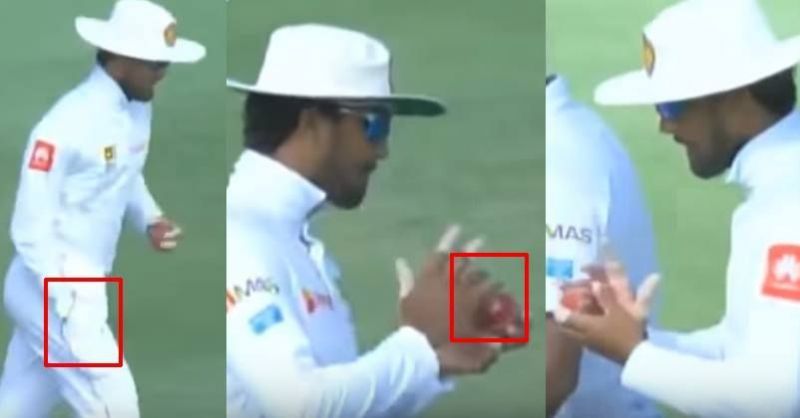
Ball Tampering: Is the cricketing fraternity very harsh on 'Sandpaper' culprits?

Disclaimer: The views expressed in this article are those of the author and they do not necessarily represent the views of Sportskeeda
If there is any particular day, which every Australian cricket fan wishes to rewrite, then it should be March 24, 2018. It was third day of the third Test match between South Africa and Australia. Television footages caught Cameron Bancroft red-handed when he used a foreign object to tamper the ball. Later at the conclusion of the play, Steve Smith and Bancroft confessed that they did tamper the ball.
In hindsight, this incident was supposed to increase the count of ball tampering scandals in the history of cricket. However, the aftermath of this episode was beyond everyone’s imaginations. When the incident broke out, entire Australia was sleeping due to the time difference.
The whole nation was shocked when they woke up the next day. Even the Australian Prime Minister, Malcolm Turnbull, was unhappy with the saga. Loads of former cricketers, experts, journalists, and fans (from all over the world) lashed out at the Australian duo of Smith and Bancroft.
International Cricket Council (ICC) banned Smith for one Test match and fined Bancroft 75% match fee. To restore the pride of cricket in Australia, Cricket Australia (CA) conducted further investigations. David Warner was identified as the ‘mastermind’ behind this incident and CA banned him and Smith for one-year from International and Domestic cricket.
On the other hand, Bancroft was banned for nine months. Besides, Warner was banned from captaincy for life. Smith and Bancroft were prohibited from captaincy for 12 months after the completion of their ban. Later, Darren Lehmann stepped down as the Coach of Australian Men Cricket team.
June 16, 2018. It was third day of the second Test match between West Indies and Sri Lanka. Before the start of Day 3, umpires Aleem Dar and Ian Gould laid a charge of ball tampering on Sri Lankan captain Dinesh Chandimal and a five-run penalty was imposed.
However, Chandimal refused the allegation, and the Sri Lankan team declined to enter the field. Sri Lanka team management was seen in animated discussions with match referee Javagal Srinath and were in contact with cricket administrators in Colombo. After nearly two-hour long discussions, the play finally resumed.
During the hearing conducted after the end of second Test, Chandimal saw the footage of him retrieving something from his pocket, putting it into his mouth, and only a few seconds later, applying that saliva to the ball before handing it to bowler Lahiru Kumara. In the end, ICC banned the Sri Lankan skipper, coach, and manager for four ODIs and two Tests for acting against the spirit of the game.

In the infamous ‘Sandpaper’ scandal, Warner was the mastermind. Bancroft executed the plan. Despite the knowledge of this premeditated plan, Smith did not intend to stop it. In the Sri Lanka scandal, Chandimal was the one who did all the damage. However, the backlash of these scandals was not the same.
The Australian trio were treated as if they have committed a colossal crime. Fans, former cricketers, journalists all over the world showed no mercy. However, in Chandimal's case, the density of reaction was not even 50% of the responses that sandpaper scandal attracted. Few former Sri Lankan cricketers expressed their disappointment and Sri Lanka's Sports Minister requested ICC to establish ‘simple, clear rules’ on ball tampering issues.
My intention is not to support the Australian trio and both the scandals were against the spirit of the game. Nevertheless, the aftermath of these incidents exposed the massive ‘double standards’ among the cricketing fraternity. It looked like the entire cricketing world was waiting for the downfall of Australia.
More than the ‘Australian Way’ of cricket, it was their incredible success during the period of late 90s and early 2000s that earned them a massive amount of haters.
‘Sandpaper’ was trending on all of the social media’s portals. It was the talking point among all the cricket fans for close to a month. In contrast, very few (in comparison with sandpaper scandal) noticed the ball tampering scandal in West Indies and only a handful of people reacted to it.
Just like Bancroft, Chandimal also premeditatedly brought something in his pocket. Hence, both scandals were premeditated. However, the player who executed the plan differs in both of these cases.
In South Africa, a young cricketer from Australia implemented the idea, however, in West Indies, the skipper of the Sri Lankan cricket team was directly involved. This difference raises the following question – Is there a ‘double standard’ among the cricketing fraternity?